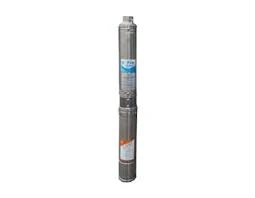Dec . 06, 2024 02:42 Back to list
solar powered submersible pump
Harnessing the Power of the Sun Solar-Powered Submersible Pumps
In an era characterized by escalating energy demands and environmental concerns, the quest for sustainable solutions has become more pressing than ever. Among various innovations that exemplify this pursuit, solar-powered submersible pumps stand out as pivotal tools for water management in agriculture, urban infrastructure, and rural communities. These systems offer a reliable means to access groundwater while minimizing environmental impact and reducing reliance on fossil fuels.
The Mechanics of Solar-Powered Submersible Pumps
At its core, a solar-powered submersible pump consists of a pump, a motor, and solar panels. The pump, designed to operate underwater, draws water from aquifers and delivers it to the surface. The motor, powered by solar energy, drives the pump's mechanism. Solar panels convert sunlight into electricity, which powers the motor. The simplicity of this design is one of its greatest strengths; there are no complicated moving parts above ground, and maintenance is generally minimal.
When sunlight hits the solar panels, it generates direct current (DC) electricity. This electricity is then converted to alternating current (AC) by an inverter, if needed, allowing the motor to operate efficiently. The efficiency of the entire system often depends on the size and quality of the solar panels, the pump's design, and the depth from which water needs to be extracted.
Advantages of Solar-Powered Submersible Pumps
1. Sustainability One of the most significant advantages of solar-powered submersible pumps is their positive environmental impact. By relying on solar energy, these systems reduce greenhouse gas emissions compared to traditional diesel or electric pumps. This is particularly beneficial in remote locations where conventional power sources are unstable or unavailable.
2. Cost-Effective Operation Once installed, solar-powered pumps have minimal operational costs. Solar energy is free, which significantly reduces the cost of water extraction over time. While the initial investment for the solar panels and pump system may be higher, the long-term savings on energy costs often justify the expense.
solar powered submersible pump

3. Water Accessibility In many regions, groundwater is the primary source of water for irrigation, drinking, and other uses. Solar-powered submersible pumps make it feasible to extract groundwater in remote areas. This can be especially beneficial for farmers in regions prone to drought, allowing them to maintain crop yields even when surface water is scarce.
4. Low Maintenance These pumps typically require less maintenance than traditional options. The absence of moving parts above ground means there’s less wear and tear from environmental exposure. Regular checks on the solar panels and occasional servicing of the pump are usually all that is needed to keep the system functioning efficiently.
5. Energy Independence In places where electricity supply is inconsistent, installing solar-powered submersible pumps provides a degree of energy independence. Communities can access essential water supplies without being tied to the grid or dependent on fossil fuels, creating resilience against energy price fluctuations and outages.
Applications and Future Prospects
The versatility of solar-powered submersible pumps allows for applications in various fields. Agriculture is the most prominent sector, where farmers use these systems to irrigate their crops sustainably. However, they are also applicable in municipal water supply systems, industrial processes, and rural water supply projects.
As technology advances, the efficiency and affordability of solar-powered systems continue to improve. Innovations in photovoltaic materials and battery storage solutions can enhance the performance of these pumps, making them even more viable for widespread use. Integrating smart technology can also optimize performance; for instance, sensors can monitor water levels and automatically adjust pump operation, ensuring efficient water usage.
Conclusion
Solar-powered submersible pumps represent a crucial step towards sustainable water management. They combine technological innovation with environmental stewardship, making them an attractive solution for a world that increasingly values energy efficiency and sustainability. As communities worldwide seek sustainable practices, the adoption of solar-powered submersible pumps will likely continue to rise, addressing both water scarcity and the imperative for cleaner energy sources. With their many benefits, these pumps not only pave the way for a more sustainable future but also empower communities to thrive in harmony with the environment.
-
Submersible Water Pump: The Efficient 'Power Pioneer' of the Underwater World
NewsJul.01,2025
-
Submersible Pond Pump: The Hidden Guardian of Water Landscape Ecology
NewsJul.01,2025
-
Stainless Well Pump: A Reliable and Durable Pumping Main Force
NewsJul.01,2025
-
Stainless Steel Submersible Pump: An Efficient and Versatile Tool for Underwater Operations
NewsJul.01,2025
-
Deep Well Submersible Pump: An Efficient 'Sucker' of Groundwater Sources
NewsJul.01,2025
-
Deep Water Well Pump: An Efficient 'Sucker' of Groundwater Sources
NewsJul.01,2025
-
 Submersible Water Pump: The Efficient 'Power Pioneer' of the Underwater WorldIn the field of hydraulic equipment, the Submersible Water Pump has become the core equipment for underwater operations and water resource transportation due to its unique design and excellent performance.Detail
Submersible Water Pump: The Efficient 'Power Pioneer' of the Underwater WorldIn the field of hydraulic equipment, the Submersible Water Pump has become the core equipment for underwater operations and water resource transportation due to its unique design and excellent performance.Detail -
 Submersible Pond Pump: The Hidden Guardian of Water Landscape EcologyIn courtyard landscapes, ecological ponds, and even small-scale water conservancy projects, there is a silent yet indispensable equipment - the Submersible Pond Pump.Detail
Submersible Pond Pump: The Hidden Guardian of Water Landscape EcologyIn courtyard landscapes, ecological ponds, and even small-scale water conservancy projects, there is a silent yet indispensable equipment - the Submersible Pond Pump.Detail -
 Stainless Well Pump: A Reliable and Durable Pumping Main ForceIn the field of water resource transportation, Stainless Well Pump has become the core equipment for various pumping scenarios with its excellent performance and reliable quality.Detail
Stainless Well Pump: A Reliable and Durable Pumping Main ForceIn the field of water resource transportation, Stainless Well Pump has become the core equipment for various pumping scenarios with its excellent performance and reliable quality.Detail
